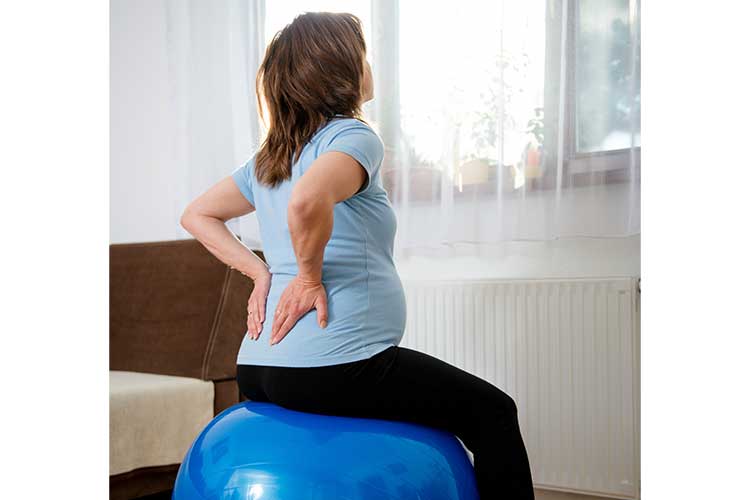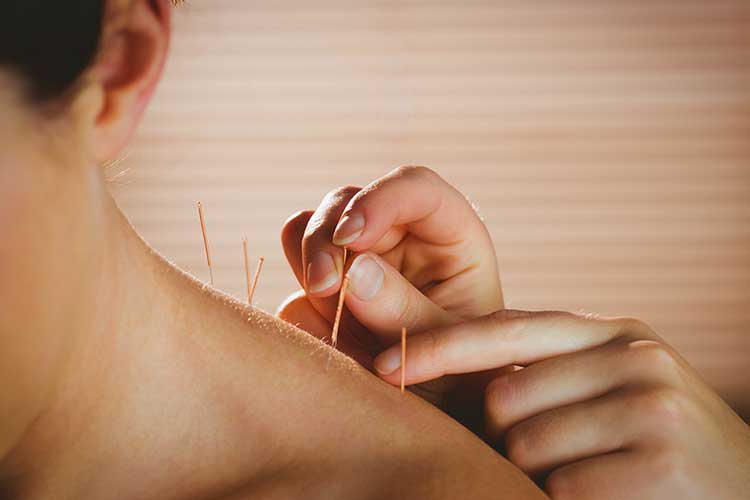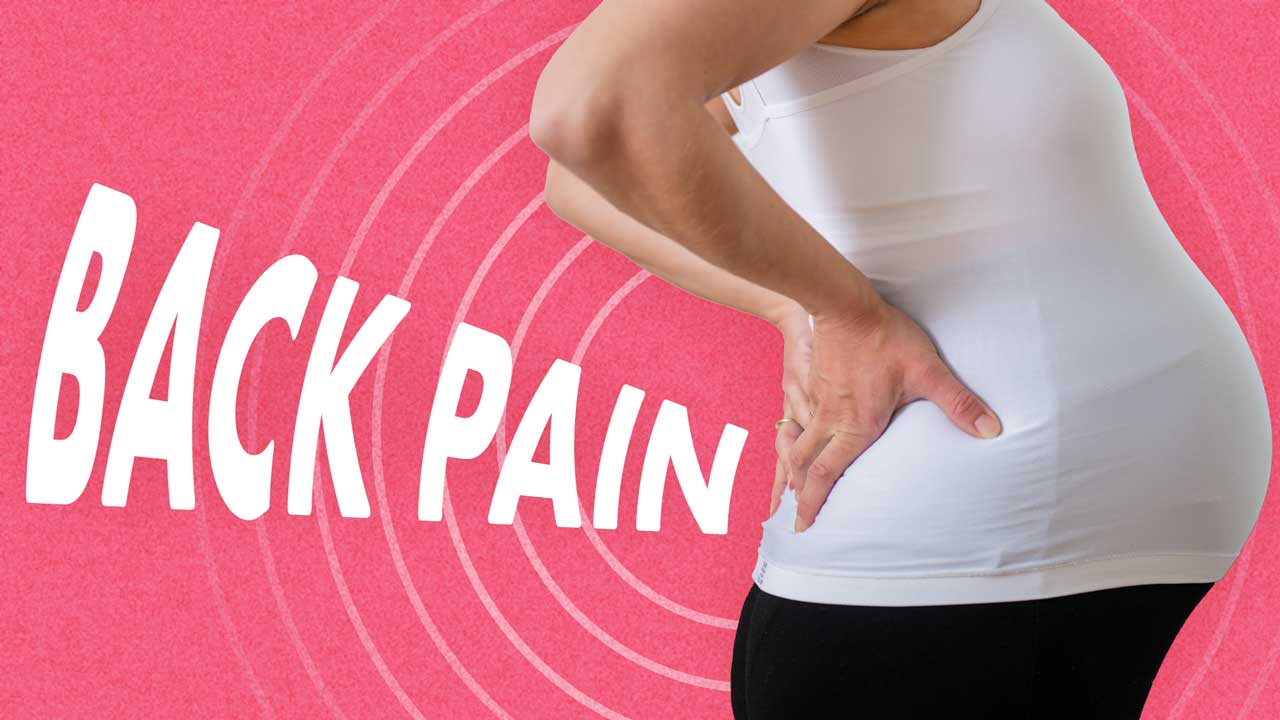Low back pain (LBP) during pregnancy is often accepted as normal - and even though multiple research studies suggest that the quality of life for patients is adversely affected, many are still advised to self-manage.
LBP is a common complaint during pregnancy, estimated to affect somewhere between 4 and 84% of people (ALEC 2024).
For many patients, the level of pain experienced is high enough to significantly impact their quality of life, interfere with sleep and compromise their ability to work (Pregnancy, Birth and Baby 2023; Cedars-Sinai 2020).
Pregnancy profoundly affects the human body, especially within the musculoskeletal system. Hormonal changes cause laxity in the joint ligaments, weight gain and a shift in the centre of gravity, which also leads to lumbar spine hyperlordosis and anterior tilting of the pelvis. These changes can all cause discomfort (Raja & Jackson 2022).

Multimodal Management is Common
Effective management of LBP can be challenging, not least because many of the treatment options are outside the scope of professional practice for most midwives and birthing assistants. This means that self-help techniques and multimodal management are common (Bishop et al. 2016).
Many patients consider LBP an inevitable, normal discomfort during pregnancy, causing it to often go untreated (Long et al. 2021).
Furthermore, Close et al. (2016) suggest that a general sense of dissatisfaction with routine advice and treatment results in many people seeking alternative solutions to cease their discomfort.
Filling the Treatment Gap
With relatively few effective treatment options available within conventional maternity care, many patients are turning to self-help measures and complementary therapies to find relief.
For many patients, the answer is either self-help or private complementary or alternative healthcare. In either case, even though midwives may not be able to prescribe alternative therapies, it can be helpful to have a broad idea of how certain evidence-based therapies can help.
The most popular therapies and self-help techniques patients turn to for relief include:
Exercise
Mild to moderate exercise during pregnancy is safe and may help to relieve back pain (Cedars-Sinai 2020).
This could include walking, swimming, and stretching and strengthening exercises (Pregnancy, Birth and Baby 2023).
Manual Therapies
There is some limited evidence to support the use of manual therapies such as osteopathy and massage as an option for managing back pain during pregnancy.
However, Hall et al. (2016) believe that further high-quality research is needed to determine the effectiveness of these treatments.

Complementary Therapies
Hughes et al. (2018) point out that over half of patients who seek treatment from a GP or physiotherapist are dissatisfied with the outcome of their care.
Their study found that 81% of patients use complementary and alternative medicine (CAM) to manage their lower back pain, and 85% found it useful (Hughes et al. 2018).
The most commonly used CAM treatments during pregnancy are:
- Aromatherapy 21%
- Acupuncture 21%
- Reflexology 15%.
Aromatherapy
Shirazi et al. (2016) comment on an interesting study into the efficacy of topical rose oil in the carrier almond oil, in patients with pregnancy-related low back pain.
The results showed that rose oil was beneficial as well as being a popular and pleasant treatment option, reducing the intensity of pregnancy-related low back pain without any significant adverse effects.
Acupuncture
The use of acupuncture for the management of persistent non-specific low back pain is generally considered beneficial even though its use in the management of pregnancy-related low back pain remains limited.

Reflexology
Reflexology is also a popular treatment option and has been shown to help nonspecific low back pain and may be equally valuable in the management of pregnancy-related low back pain, however, as Close et al. (2016) suggest, further research is needed to confirm this.
Self-Help Techniques
Patients may be able to manage LBP by:
- Avoiding lifting heavy objects
- Maintaining good posture
- Sleeping on their side with a pillow between their legs
- Wearing flat shoes
- Wearing a maternity support belt
- Sleeping on a firm mattress.
(NHS 2024; Flinders Medical Centre 2022; Pregnancy, Birth and Baby 2023)
Can More be Done?
With LBP causing physical and emotional distress to so many people during pregnancy, the question needs to be asked: could more be done to provide effective treatment within the scope of traditional maternity care?
Perhaps patients themselves need a better awareness of how to manage low back pain, as fear and anxiety can also add to the perception of pain.
Maybe, it’s time to embrace this problem within the scope of traditional maternity care, offering a wider range of evidence-based care options, so that fewer patients need to suffer in silence.
Topics
References
- Australian Living Evidence Collaboration 2024, Australian Pregnancy Care Guidelines, Australian Government, viewed 17 December 2024, https://files.magicapp.org/guideline/3aa6b881-4be5-4806-bb3e-e7c53b5b0bbf/published_guideline_7933-2_0.pdf
- Bishop, A, Holden, M, Ogollah, R & Foster, N 2016, ‘Current Management of Pregnancy-Related Low Back Pain: A National Cross-Sectional Survey of UK Physiotherapists’, Physiotherapy, vol. 102, no. 1, pp.78-85, viewed 17 December 2024, https://www.sciencedirect.com/science/article/pii/S0031940615037712
- Cedars-Sinai 2020, Back Pain During Pregnancy, Cedars-Sinai, viewed 17 December 2024, https://www.cedars-sinai.org/health-library/diseases-and-conditions/b/back-pain-during-pregnancy.html
- Close, C, Sinclair, M, Liddle, D et al. 2016, ‘Women's Experience of Low Back and/or Pelvic Pain (LBPP) During Pregnancy’, Midwifery, vol. 37, pp.1-8, viewed 17 December 2024, https://www.sciencedirect.com/science/article/abs/pii/S0266613816300171
- Flinders Medical Centre 2022, Pregnancy-related Back and Pelvic Pain, Government of South Australia, viewed 18 December 2024, https://www.sahealth.sa.gov.au/wps/wcm/connect/608b4a5f-549a-4fee-8630-191fcc073fb1/Pregnancy+related+back+and+pelvic+pain+consumer+health+information+-+Physiotherapy+FMC.pdf?MOD=AJPERES&CACHEID=ROOTWORKSPACE-608b4a5f-549a-4fee-8630-191fcc073fb1-ousCOtU
- Hall, H, Cramer, H, Sundberg, T et al. 2016, ‘The Effectiveness of Complementary Manual Therapies for Pregnancy-Related Back and Pelvic Pain’, Medicine, vol. 95, no. 38, p.e4723, viewed 18 December 2024, https://www.ncbi.nlm.nih.gov/pmc/articles/PMC5044890/
- Hughes, C, Liddle, S, Sinclair, M & McCullough, J 2018, ‘The Use of Complementary and Alternative Medicine (CAM) for Pregnancy Related Low Back and/ or Pelvic Girdle Pain: An Online Survey’, Complementary Therapies in Clinical Practice, vol. 31, pp.379-383, viewed 18 December 2024, https://www.sciencedirect.com/science/article/abs/pii/S1744388117303638
- Long, G, Yao ZY, Na, Y et al. 2021, ‘Hand Grip Strength as a Predictor of Recovery From Low Back Pain in the Pregnant Women-A Prospective Study’, Journal of Orthopaedic Science, vol. 26, no. 4, viewed 17 December 2024, https://www.sciencedirect.com/science/article/abs/pii/S0949265820301834?via%3Dihub
- National Health Service 2024, Back Pain in Pregnancy, NHS, viewed 18 December 2024, https://www.nhs.uk/pregnancy/related-conditions/common-symptoms/back-pain/
- Pregnancy, Birth and Baby 2023, Backache in Pregnancy, Healthdirect Australia, viewed 17 December 2024, https://www.pregnancybirthbaby.org.au/backache-in-pregnancy
- Raja, A & Jackson, K 2022, The Biomechanics of Pregnancy, Physiopedia, viewed 17 December 2024, https://www.physio-pedia.com/The_Biomechanics_of_Pregnancy
- Shirazi, M, Mohebitabar, S, Bioos, S et al. 2016, ‘The Effect of Topical Rosa Damascena (Rose) Oil on Pregnancy-Related Low Back Pain’, Journal of Evidence-Based Complementary & Alternative Medicine, vol. 22, no. 1, pp.120-126, viewed 18 December 2024, https://journals.sagepub.com/doi/full/10.1177/2156587216654601
 New
New 
